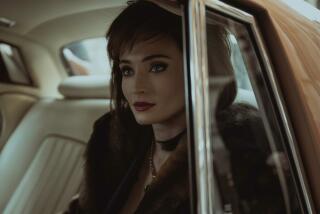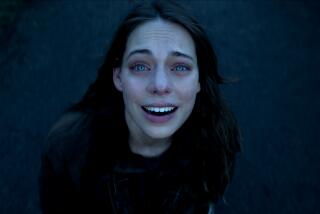‘The Darkest Hour’ review: Alien invasion in Russia
- Share via
When the end of the world comes, would you really want to be in a sleazy Russian nightclub? That’s one of the essential questions pondered in “The Darkest Hour,” in which aliens invade the planet and a small group of attractive young people fight to survive and make their way elsewhere.
As the film opens, two American web entrepreneurs (Emile Hirsch, Max Minghella) are heading to Moscow looking for funding for their location-based social media service. After they are double-crossed by a would-be business partner (Joel Kinnaman) they go to drown their sorrows in a nightspot where they meet a couple of young women (Olivia Thirlby, Rachael Taylor) who are impulsively traveling the globe.
Then an invasion of diaphanously floating, twinkly lights hits the city, apparitions that turn anyone that crosses their path to dust. Seemingly feeding off of (and given away by) electricity, the invaders are more easily seen at nighttime, setting the youngsters on a series of dimly-lit adventures as they make their way across the city.
None of them is exactly prepared to go into survivalist mode, especially the two young women in their thin, sparkly tops that looked cute in the club but are definitely not apocalypse-ready. Thirlby actually carries her high heels around for a while, running in bare feet until she can find a suitable pair of boots when they all briefly encamp in an abandoned shopping center. As Hirsch asks at one point, “What’s the dress code for the end of the world? Jacket, no tie?”
Director Chris Gorak previously made the effective, low-budget, horror-thriller “Right at Your Door,” and in making this move to a splashy, bigger film his instincts for character have perhaps been overwhelmed by the demands of a larger production. Capable and compelling performers like Hirsch and Thirlby seem left to their own devices to make some connection with the material. The idea of semi-invisible aliens, an unseen enemy, should mean the film has a lingering sense of paranoid abstraction (not unlike “Right at Your Door”), but “Darkest Hour” never gets beyond rote efficiency.
Though the production did shoot in Russia — including gaining access to iconic locations like Red Square — the separation of spatial planes created by using 3-D technology, as well as the notorious murkiness of 3-D projection, make the real-world shots look oddly fake. What’s the point of going all the way to Moscow if the shots you come back with end up looking like cheap green-screen process work?
More to Read
The biggest entertainment stories
Get our big stories about Hollywood, film, television, music, arts, culture and more right in your inbox as soon as they publish.
You may occasionally receive promotional content from the Los Angeles Times.











